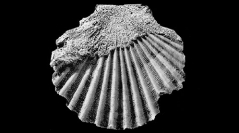

 Geodiversitas
24 (3) - Pages 641-657
Geodiversitas
24 (3) - Pages 641-657The Messinian pre-evaporitic deposits of the Sorbas basin (SE Spain) are very rich and diversified in bivalves assemblages. The palaeoecological analysis of these fossils allows to distinguish three associations characteristic of particular palaeoenvironmental ranges: 1) the first association located in the upper part of the inner shelf includes large pectinids, such as Flabellipecten fraterculus fraterculus (Sowerby, 1841); 2) the second association, more developped in deeper parts of the inner shelf, is more rich with epibenthic and endobenthic forms; 3) the last association is more specific of the outer shelf, especially Amusium cristatum (Bronn, 1828). The presence of the two last associations in the Messinian gypsum of Los Yesos, in the western part of the Sorbas basin, is an argument in favour of the gypsum deposit under relatively large water depth. The survival of these bivalves, typically stenohaline and marine organisms, in the last levels of Messinian gypsum of Sorbas basin, testifies the existence of marine connexions between this basin and normal marine areas during the evaporitic episode.
Mollusca, Bivalvia, palaeoenvironments, Messinian, evaporites, Sorbas, western Mediterranean